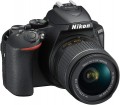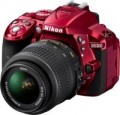DxOMark rating
The result shown by the camera in the DxOMark ranking.
DxOMark is one of the most popular and respected resources for expert camera testing. According to the test results, the camera receives a certain number of points; The more points, the higher the final score.
Light sensitivity (ISO)
The sensitivity range of a digital camera matrix. In digital photography, light sensitivity is expressed in the same ISO units as in film photography; however, unlike film, the light sensitivity of the sensor in a digital camera can be changed, which gives you more options for adjusting shooting parameters. High maximum light sensitivity is important if you have to use a lens with a low aperture (see Aperture), as well as when shooting dimly lit scenes and fast-moving objects; in the latter case, high ISO allows you to use low shutter speeds, which minimizes image blur. However, note that with an increase in the value of the applied ISO, the level of noise in the resulting images also increases.
Optical zoom
The magnification factor provided by the camera by using the capabilities of the lens (namely, by changing its focal length). In models with interchangeable lenses (see “Camera type”), indicated for the complete lens, if available.
Note that in this case the magnification is indicated not relative to the image visible to the naked eye, but relative to the image produced by the lens at minimum magnification. For example, if the characteristics indicate an optical zoom of 3x, this means that at the maximum magnification, objects in the frame will be three times larger than at the minimum.
The degree of optical zoom is directly related to the range of focal lengths (see above). You can determine this degree by dividing the maximum focal length of the lens by the minimum, for example 360mm / 36mm=10x magnification.
To date, optical zoom provides the best "close" image quality and is considered to be superior to digital zoom (see below). This is due to the fact that with this format of work, the entire area of \u200b\u200bthe matrix is constantly involved, which allows you to fully use its capabilities. Therefore, even among low-cost models, devices without optical zoom are very rare.
Number of scene programs
The number of scene programs provided in the camera design.
Scene programs are preset settings for some of the most common shooting scenes - for example, Portrait, Landscape, Sports, Sunset, etc. In addition to these presets, this list may include special effects and creative tools (such as color swap or fisheye), as well as exposure modes (see below). The presence of scene programs is especially useful for beginners and non-professional photographers, as it eliminates the need to tinker with each setting separately - just select the most suitable program, and all the necessary settings will be set automatically. The more scene programs the camera design provides, the wider its automatic adjustment capabilities.
Frames per series (JPEG)
The highest number of shots a camera can capture “in one go” in JPEG continuous shooting.
The technical features of modern digital cameras are such that during continuous shooting, photos have to be recorded in a special buffer, and only then, after the end of the series, they can be copied to a memory card. This buffer has a limited size, so the number of frames in one series is also limited. At the same time, we note that this indicator is usually indicated for shooting at the highest possible resolution (see "Maximum image size"); at lower resolutions, the volume of each image is reduced, and the number of frames in the series may turn out to be more than stated in the specifications.
JPEG, the most popular digital photography format today, is smaller and requires less processing power than RAW (see "Recording in RAW Format"). Therefore, in a JPEG series, as a rule, more frames are available to the photographer. However, in some models that have two separate buffers (for RAW and JPEG), it may be the other way around.
Frames per series (RAW)
The highest number of shots the camera can capture “in one shot” when shooting in RAW format continuously (see “Recording in RAW Format”).
The technical features of modern digital cameras are such that during continuous shooting, photos have to be recorded in a special buffer, and only then, after the end of the series, they can be transferred to a memory card. This buffer has a limited size, so the number of frames in one series is also limited. At the same time, we note that this indicator is usually indicated for shooting at the highest possible resolution (see "Maximum image size"); at lower resolutions, the volume of each image is reduced, and the number of frames in the series may be more than stated in the specifications.
RAW images take up more space and require more processing power than "finished" JPEGs. Therefore, the number of frames in a series of this format is usually lower than that of JPEG. However, there are exceptions — usually these are cameras that have two separate buffers (for RAW and JPEG).
Frames per series (JPEG RAW)
The highest number of frames a camera can capture “in one go” in continuous shooting mode, where the same frame is saved in both JPEG and RAW format at the same time (see “Recording in RAW Format”).
The technical features of modern digital cameras are such that during continuous shooting, photos have to be recorded in a special buffer, and only then, after the end of the series, they can be copied to a memory card. This buffer has a limited size, so the number of frames in one series is also limited. At the same time, we note that this indicator is usually indicated for shooting at the highest possible resolution (see "Maximum image size"); at lower resolutions, the volume of each image is reduced, and the number of frames in the series may turn out to be more than stated in the specifications.
Shooting JPEG and RAW at the same time requires a lot of resources, and the materials themselves take up a lot of space. Therefore, the possibility of such shooting itself is available mainly in premium cameras, and the number of frames in a JPEG RAW series is usually less (at best, the same) than in any of these formats separately.
Connection ports
— USB C. A universal USB interface that uses a Type C connector. USB ports themselves (all types) are used mainly for connecting the camera to a computer for copying footage, managing settings, updating firmware, etc. Specifically The Type C connector is comparable in size to earlier miniUSB and microUSB, but has a reversible design that allows the plug to be inserted in either direction. In addition, USB C often operates according to the USB 3.1 standard, which allows for connection speeds of up to 10 Gbps - a useful feature when copying large amounts of content.
-
HDMI. A comprehensive digital interface that allows you to transmit video (including high resolution) and audio (up to multi-channel) over a single cable. The presence of such a port makes it possible to use the camera as a player: it can be directly connected to a TV, monitor, projector, etc. and view your footage on the big screen. In this case, broadcast capabilities can include not only video playback, but also demonstration of captured photos in slide show mode. HDMI inputs are present in most modern video equipment, and connection is usually not a problem.
Nowadays, there are several versions of the HDMI interface on the market:
- v 1.4. The oldest version currently relevant, released in 2009. However, it supports 3D video, is capable of working with resolutions up to 4096x2160 at a speed of 24 fps, and in Full HD resolution the frame rate can reach 120...fps. In addition to the original v.1.4, there are also improved modifications - v.1.4a and v.1.4b; they are similar in basic capabilities, in both cases the improvements affected mainly work with 3D content.
- v2.0. Significant HDMI update introduced in 2013. In this version, the maximum frame rate in 4K has increased to 60 fps, and support for ultra-wide 21:9 format can also be mentioned. In update v.2.0a, HDR support was added to the interface capabilities; in v.2.0b this function was improved and expanded.
- v 2.1. Despite the similarity in name to v.2.0, this version, released in 2017, was a very large-scale update. In particular, it added support for 8K and even 10 K at speeds up to 120 fps, and also further expanded the capabilities for working with HDR. This version was released with its own cable - HDMI Ultra High Speed; all features of v.2.1 are available only when using cables of this standard, although basic functions can be used with simpler cords.
— Headphone output. Audio output allows you to connect headphones to the camera. As a rule, it is represented by a classic 3.5 mm mini-jack. The presence of such a connector provides the ability to monitor sound during video recording in real time. This is especially important when filming interviews, vlogs and other similar projects.
— Microphone input. Specialized input for connecting an external microphone to the camera. External microphones are significantly superior to built-in microphones in sound quality. Firstly, they are not so sensitive to the camera’s “own” sounds - from buttons, control wheels, focus motors, etc. (and if the microphone uses a long wire and is not attached to the body, these sounds will not be heard at all). Secondly, external microphones themselves have more advanced characteristics. On the other hand, their use is justified mainly for professional video recording; therefore, the presence of a microphone input, as a rule, corresponds to advanced video recording capabilities
Touch focus
The presence of the touch focus function in the design of the camera.
Such focus is necessarily combined with a touch screen (see below). It gives the photographer the opportunity to independently choose a point for focus in the frame being shot: for this, it is enough to touch this point on the image displayed on the screen.
Touch focus is extremely simple and intuitive, and therefore very convenient, especially for beginners and non-professional users.

